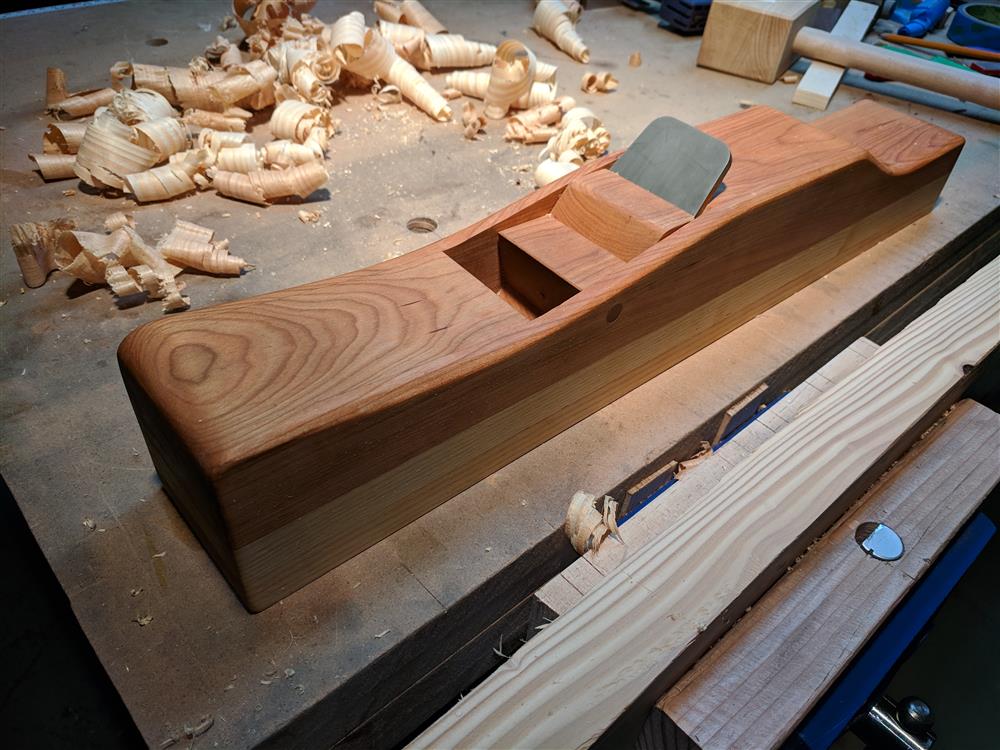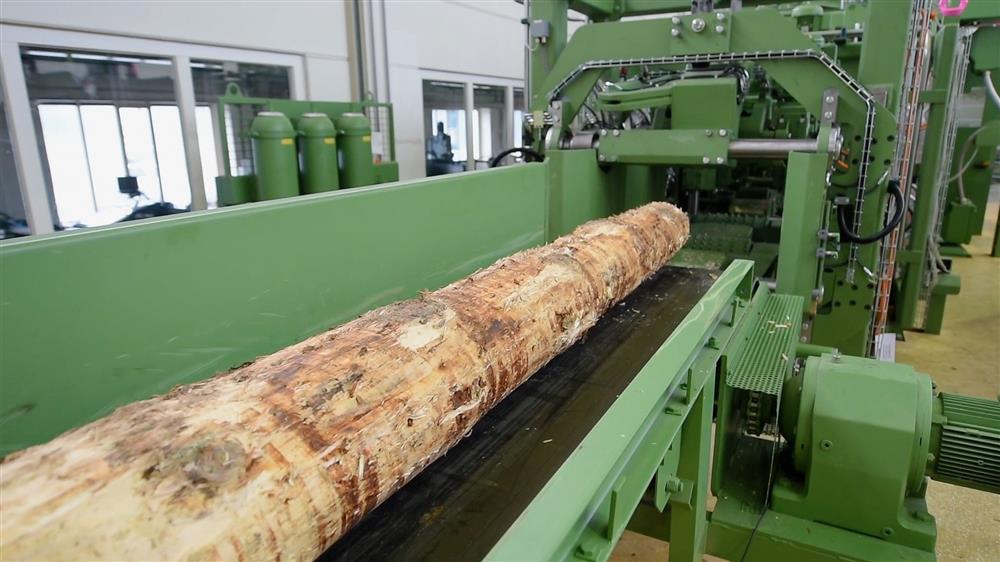How Furniture is made from Wood
Step 1: The Plan
Whether you're planning furniture or a bank robbery the most important part is having a plan. You need to know not only the dimensions but what kind of fixture you're gonna put on it, what kind of joinery, what kind of finish you want to use because they can and will impact the design of your finished work.
Draw what you want it to look like, you can do it by hand or use computer programs like Sketchup or Solidworks to flesh out the look of your furniture. Don't use Autocad, even engineers have difficulty making it work!
Next, figure out the cut list you'll need. That way you can know how much lumber and sheet goods you need and figure out the cost in materials for your project. Add 30% to your lumber needs to pad for issues with the wood or errors on your part.
If you can afford your project, make a detailed plan of every part needed for your project, I mean detailed view of every cut and joints so when the time comes to machine the parts you'll know exactly what you're doing 'cause you're the man with the plan!
Step 2: Preparation
Confucius once said:'' Check yo self before you wreck yo self'' and it was true then and still is now. I know you'll be tempted to go and start cutting stock right away but don't. Ask yourself first if there's joinery you haven't done before or if there are curved or weird parts because you might want to practice a little first and maybe build a jig or two to simplify your life a little.
You don't want to try that stuff on the real piece and have to do over a panel because you wrecked it, it will add delays and costs to your project and the name of the game is not to have less money at the end than you started out with.
Step 3: Tools
Get your tools ready and sharp before you start, most accidents happen with dull blades. Check if there is tools, router bits or accessories you could buy to make your work easier and your soul happier.
Step 4: Get Your Wood On!
Choose your lumber carefully, You want it to be as straight as possible, look for fissures at the ends, resin pockets, knots, bowing, cups and curves, you want to avoid that or at least plan your cuts accordingly. Draw your pieces on the lumber using chalk so you know where everything fits.
Check the grain pattern and plan your cuts so you keep the flow throughout the work. At this stage, you want your cuts 1/2 inch wider and 1 inch longer than the final measurements so if difficulties should arise you have some meat left to work with. Cut the lumber at the radial saw to a more manageable length.
Step 5: Panels
If you have panels to make, go straight to the table saw and rip your boards to 2-2 1/2 inches. Plan your cuts so you keep most of the boards and try to center features or grain pattern. If the boards are cupped, make sure that the ''smiley face'' is up, so when you rip it, it won't squeeze the blade and throw it back at you.
Step 6: Jointer
Identify your pieces at the end of the planks so you can keep track of them. At the jointer adjust the fence to the width you need and make sure it's 90 degrees with the table. Adjust the table for 1/16 inch cut Wear safety goggles and use push sticks.
Go slow and use even pressure, you won't work hardwoods the same way as softwoods, The jointer and thickness planer can rip chunks of hardwoods if you pass it on the wrong side of the grain and make you curse so much that even sailors would blush. So plan for it so your piece comes out perfect every time!
Pass 1 face and one edge on the jointer and identify them for use on the table saw and thickness planer. If you are making panels, do 1 face and 2 edges and go glue 'em up. Put a mark on the sides that went on the jointer for future reference.
Step 7: Table Saw
If you have long pieces to pass on the table saw (say 72 inches), watch out for tension in the wood causing it to curve/bow, plan for it so you'll maybe be able to go back to the jointer and correct them. Put the mark you made on the edge of your pieces on the table saw fence so you rip them true.
Always pass your wood on the long side, if your piece is wider than long use a cross-cut sled or a chop saw. I've seen what happens when the table saw bites on a wide piece of wood and sends it flying, it ain't pretty. There are still holes in the wall that we keep as reminders. Set the blade height so 1 tooth is over the board.
Step 8: Fun With Glue
Prepare your clamps for the panels, check for the harmony of grain figure and decide which piece goes where. Trace the growth rings and make sure they don't go in the same direction from one piece to the next to ensure the strongest panel possible. By tracing the rings there's less chance of confusion with the saw marks. Put glue on one side of every piece and put the clamps at distances to maximize contact with the glue. Use as many clamps as you need. Normally you should be able to trace a 45-degree line from one clamp to the next that way you'll know you have even pressure everywhere.
If you are using softwood, use a martyr (a sacrificial piece of wood) between the clamps and the panel so the clamps don't mark them. Excess glue is ok, but we don't want a bukkake.
Step 9: Thickness Planer
Read the grain and feed the board according to the blade rotation of the planer. Put the mark you made on the face of your piece while at the jointer face down on the table. If you are using hardwoods go in 1/16 inch increments or even 1/32 inch because I'm telling you that you'll be filled with rage when it rips chunks out your wood and there are not enough passes left to correct them before you get to the desired thickness! When the blade touched all the surface, flip your piece over at every pass afterward.
Step 10: Cut It to Length
Cut your pieces to length on the miter saw. If you made panels, cut them on the panel saw or with a circular saw using a guide so you're straight Make a zero cut first! That is cut one end so it is straight, flip it end to end and then measure the desired length and cut it to length.
Step 11: Tracing
Now that everything is cut to size, you need to mark what goes where look for grain pattern and try to match everything. Next, put a mark on what will become your show face. Now trace everything you need to do to your pieces (joints, mortise, tenon, rabbit, etc). This is where all the drawings you made as a kid pays off, be as precise as possible.
Step 12: Machining
Now is time to machine everything, if there's a lot of things to do on your piece, plan the order of all the operations so it's logical and easy to measure. If you have mortise and tenon joints, start with your mortises, check the depth! think you got it? check again, you don't want to start over. Next, try it on a martyr (a piece of scrap wood that match the specs of the piece you want to machine.)
Is everything good? take a deep breath and go for it, become the machine! Clean your mortises with a mortising chisel.
Next machine your Tenons, put dadoes on your table saw and be sure to bring the mortise they should fit into with you to test if they fit perfectly. Use the crosscut sled since you will be cutting on the wide side. If it doesn't come out the way you planned, can you fix it with more glue? No? Start over
Step 13: Router
Next, go to the router, be careful not to put your hand near the blade. Put even pressure across the pieces so they come out perfect. Make sure you adjust the fence with the bearing of the bit. Make successive passes so it doesn't rip chunks out of it. If you work with hardwoods, it could be a good idea to round the edges a bit so the bit is less aggressive. When working with end grain, put a martyr at the end to minimize blowouts. If it didn't go according to plan, remember it's not a mistake, it's an improvised design! Try and repeat it on the other side so it looks like you meant it that way.
Step 14: Raised Panels
If you make raised panels on the shaper or router, remember to put your good face on the table. Make a lot of passes (1/16 inch increments) Make sure to test fit with the frame while the machine is set up properly.
Step 15: Dry Fit
Before gluing anything, make a dry assembly to make sure everything is where it should be and fits perfectly.
Step 16: Stains and Dyes
If you're trying something new, design a test to see what it will look like. Use the same wood as your project and sand it the same way and to the same grit so it reflects accurately the finished look.
Then use what looks the best on the project. If you are working with a blotchy wood like Cherry, you might want to seal the wood before applying the stain or dye. Apply it everywhere, wait until it's dry and sand it again so only the bottom of the fibers are sealed. That way the color will absorb evenly.
Step 17: Final Sanding
So now everything fits and looks good, Great! Now it's time for the final sand down! Sand to at least 120 grit and the end grain parts to 220-320 so the color absorbs evenly. Trace lines on your pieces with a pencil, that way when the lines are gone you'll know the sandpaper touched everywhere, thus preventing over-sanding and deformation of the piece.
Check with a good lamp to make sure all the marks from the sander are gone. If not, you will see a lot of 6s appear (typical of random orbit sanders marks) Finish by hand always sanding with the grain.
Step 18: Branding
Now is a good time to brand your work so that future generations can admire it and maybe put it in a museum.
Step 19: Stains and Dyes (2)
It's time to Dye! If you are using a solvent based stain or dye wear adequate protection for your eyes, face, and hands. Protect your surroundings from possible backsplash and drips. Prepare some clean cloth to wipe the color afterward.
Plan your staining sequence so you don't have to touch the work after the stain is applied. Let it dry on pieces of scrap wood, the less surface area it touches, the better.
Step 20: Finishing
If the color came out perfect and even, you can now put varnish and the finishing touches on the work. Before applying varnish, seal the wood either with oil (Tung or linseed) or commercial sealer to limit the fluctuations from the changes in temperature/humidity. Then use a good brush or a sponge to wipe the varnish evenly. I recommend a mix of 1/3 Boiled Linseed Oil, 1/3 Polyurethane, 1/3 Mineral Spirits. Usually 3 coats. Wait until the varnish is fully dry before applying the next coat. Sand with finer grit between coats, so 320, 400, 500, etc.
Step 21: Enjoy
You've done it! you made a cool and unique piece of furniture. Be proud! Now every time someone looks at it and says wow! You can say I made that.



































